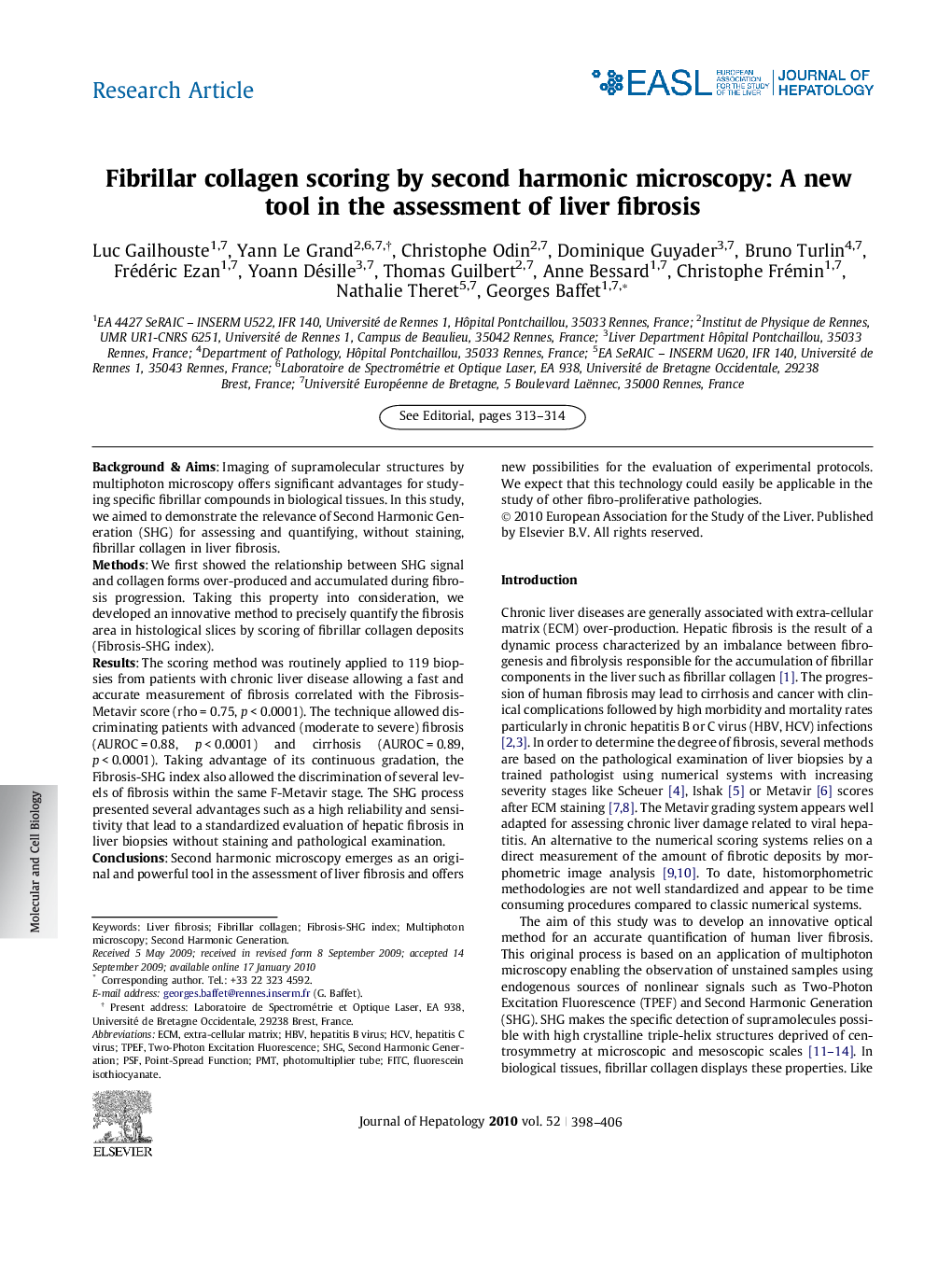| Article ID | Journal | Published Year | Pages | File Type |
|---|---|---|---|---|
| 6109554 | Journal of Hepatology | 2010 | 9 Pages |
Background & AimsImaging of supramolecular structures by multiphoton microscopy offers significant advantages for studying specific fibrillar compounds in biological tissues. In this study, we aimed to demonstrate the relevance of Second Harmonic Generation (SHG) for assessing and quantifying, without staining, fibrillar collagen in liver fibrosis.MethodsWe first showed the relationship between SHG signal and collagen forms over-produced and accumulated during fibrosis progression. Taking this property into consideration, we developed an innovative method to precisely quantify the fibrosis area in histological slices by scoring of fibrillar collagen deposits (Fibrosis-SHG index).ResultsThe scoring method was routinely applied to 119 biopsies from patients with chronic liver disease allowing a fast and accurate measurement of fibrosis correlated with the Fibrosis-Metavir score (rho = 0.75, p < 0.0001). The technique allowed discriminating patients with advanced (moderate to severe) fibrosis (AUROC = 0.88, p < 0.0001) and cirrhosis (AUROC = 0.89, p < 0.0001). Taking advantage of its continuous gradation, the Fibrosis-SHG index also allowed the discrimination of several levels of fibrosis within the same F-Metavir stage. The SHG process presented several advantages such as a high reliability and sensitivity that lead to a standardized evaluation of hepatic fibrosis in liver biopsies without staining and pathological examination.ConclusionsSecond harmonic microscopy emerges as an original and powerful tool in the assessment of liver fibrosis and offers new possibilities for the evaluation of experimental protocols. We expect that this technology could easily be applicable in the study of other fibro-proliferative pathologies.
